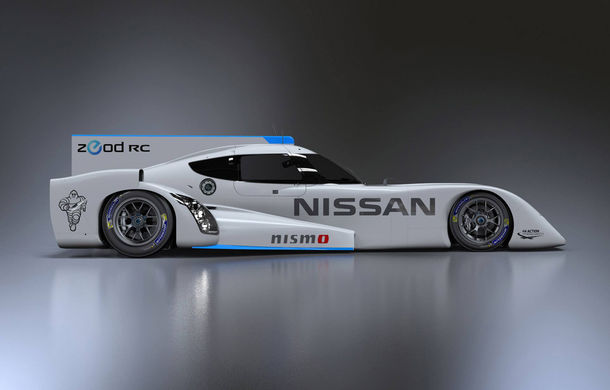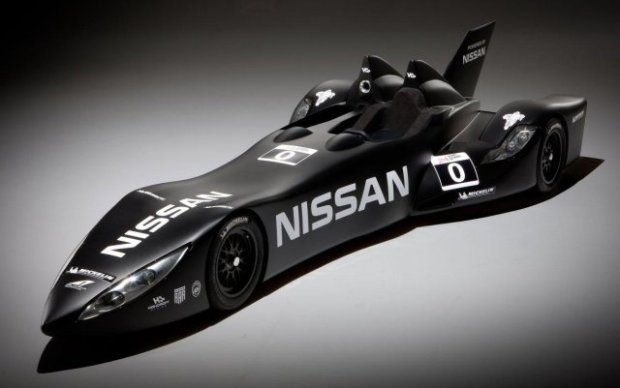The Nissan ZEOD RC – A New Jaw-Dropping Hybrid

In case it wasn’t already clear, Nissan is a brand that takes motorsports seriously. Very seriously. And they want you to know it, too. No, we’re not just talking about another typical NISMO expansion. We’re talking about something else entirely – something new. This is motorsport of the likes we’ve never seen from Nissan; this is the next level of performance and efficiency.
Curious yet?
Without further ado, here is the brand-new Nissan ZEOD RC, which the automotive titan revealed earlier this week at their Japanese headquarters:
For those of you wondering what “ZEOD RC” stands for, it’s “Zero Energy On Demand Racing Car”. As you might be able to guess from the car’s title, this isn’t like any normal race car – it’s a hybrid race car, and it will be the first ever to complete a lap around the Le Mans circuit using only electric power. That’s a distance of about 8.5 miles.
“Wait a minute,” you say, “If the Nissan ZEOD RC is a hybrid, how can it complete a lap around the Le Mans using only electric power?”
Excellent question! The answer is that the ZEOD RC has two modes of function – one using only two synchronous electric motors, the other adding in a 1.6L lightweight engine for a hybrid configuration offering 300 base horsepower. Together, the two driving modes allow the ZEOD RC a top speed above 185 mph…. Not bad for a hybrid! The powertrain is setup with a five-speed paddle-shifter.
(Your next question really should be, “If it can get up to 185 mph, then why do they say it has ‘Zero’ energy on demand?” Personally, I would call it the “Nissan GOEOD RC” — “Gobs Of Energy On Demand”.)
As to the electric-only lap, Le Mans requires every Garage 56 car (more on that below) to refuel every 12 laps. By using regenerative braking, the Nissan ZEOD RC harvests enough power from the 55 “brake events” that happen throughout the first 11 laps. Then, the 12th lap can be completed on only electric power before needing to refuel.
Truth be told, the Nissan ZEOD RC Isn’t quite as a new as we’re making it out to be. We saw a prototype earlier this year when Nissan confirmed their entry into next year’s Le Mans in the Garage 56 category, which is segment reserved for cars showcasing new technology. To go even further back, the prototype from earlier this year was in turn based on the Nissan-powered DeltaWing from 2012 (pictured below).
At the beginning of this post we said that the ZEOD RC is the next level of performance and efficiency. While we may never get to drive one of Nissan’s new super-hybrids, we will get to drive cars inspired by the attitude and technology that the ZEOD RC employs. According to Ben Bowlby, Nissan’s head of Motorsport Innovation (what a cool job), “The lessons learnt [from the ZEOD RC] will not only be very beneficial for the future LMP1 program, but also we can use this information to assist in the development of future versions of the Nissan Leaf and other electric vehicles.”
We’ll get to see the Nissan ZEOD RC officially in action next year at the 2014 Le Mans endurance race. Until then, take a trip back through time and learn where Nissan got its roots in motorsport. The next step might be the ZEOD RC, but this is where they started:



